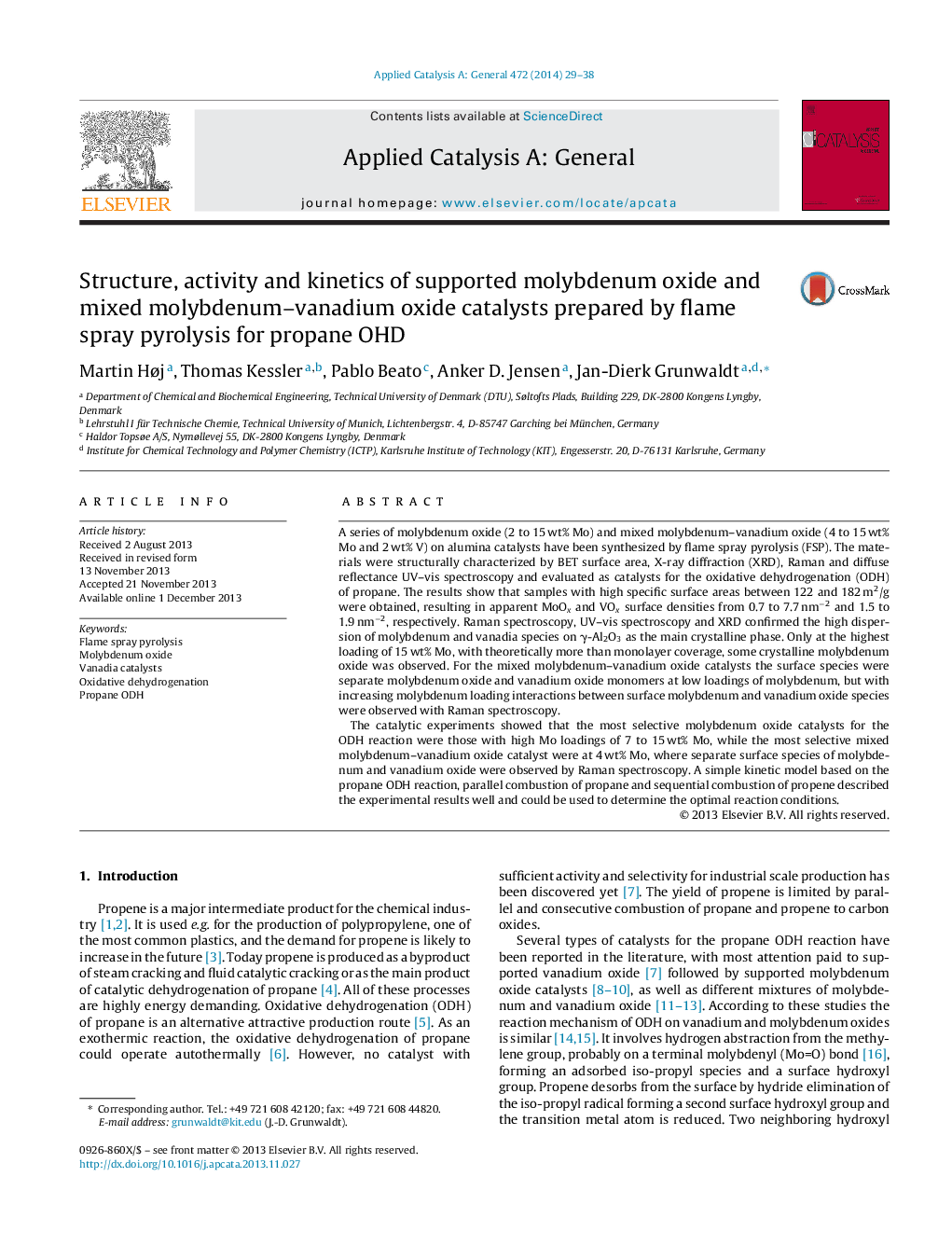| Article ID | Journal | Published Year | Pages | File Type |
|---|---|---|---|---|
| 39786 | Applied Catalysis A: General | 2014 | 10 Pages |
•Alumina supported Mo- and Mo–V-oxide catalysts prepared in one step.•FSP leads to high surface area and good dispersion as confirmed by Raman, XRD and UV–vis.•Highest propene selectivity observed at low loadings for mixed molybdenum–vanadium oxide.•Interaction between molybdenum and vanadium oxide surface species increases TOF.•Simple kinetic model used for optimizing reaction conditions for high propene yield.
A series of molybdenum oxide (2 to 15 wt% Mo) and mixed molybdenum–vanadium oxide (4 to 15 wt% Mo and 2 wt% V) on alumina catalysts have been synthesized by flame spray pyrolysis (FSP). The materials were structurally characterized by BET surface area, X-ray diffraction (XRD), Raman and diffuse reflectance UV–vis spectroscopy and evaluated as catalysts for the oxidative dehydrogenation (ODH) of propane. The results show that samples with high specific surface areas between 122 and 182 m2/g were obtained, resulting in apparent MoOx and VOx surface densities from 0.7 to 7.7 nm−2 and 1.5 to 1.9 nm−2, respectively. Raman spectroscopy, UV–vis spectroscopy and XRD confirmed the high dispersion of molybdenum and vanadia species on γ-Al2O3 as the main crystalline phase. Only at the highest loading of 15 wt% Mo, with theoretically more than monolayer coverage, some crystalline molybdenum oxide was observed. For the mixed molybdenum–vanadium oxide catalysts the surface species were separate molybdenum oxide and vanadium oxide monomers at low loadings of molybdenum, but with increasing molybdenum loading interactions between surface molybdenum and vanadium oxide species were observed with Raman spectroscopy.The catalytic experiments showed that the most selective molybdenum oxide catalysts for the ODH reaction were those with high Mo loadings of 7 to 15 wt% Mo, while the most selective mixed molybdenum–vanadium oxide catalyst were at 4 wt% Mo, where separate surface species of molybdenum and vanadium oxide were observed by Raman spectroscopy. A simple kinetic model based on the propane ODH reaction, parallel combustion of propane and sequential combustion of propene described the experimental results well and could be used to determine the optimal reaction conditions.
Graphical abstractFigure optionsDownload full-size imageDownload high-quality image (226 K)Download as PowerPoint slide
